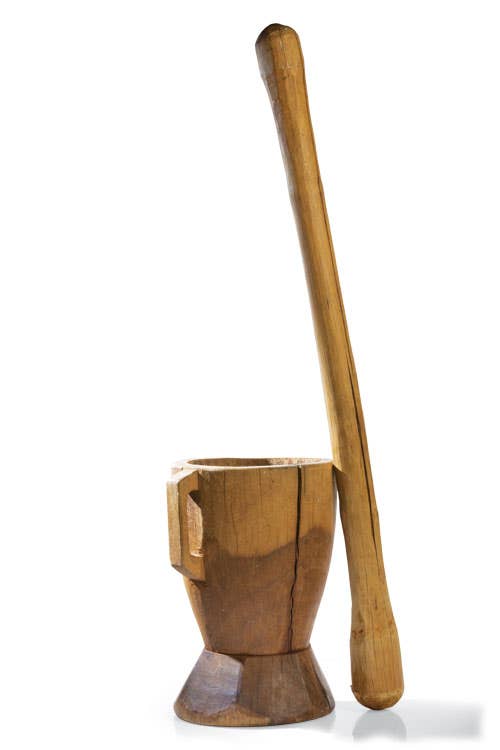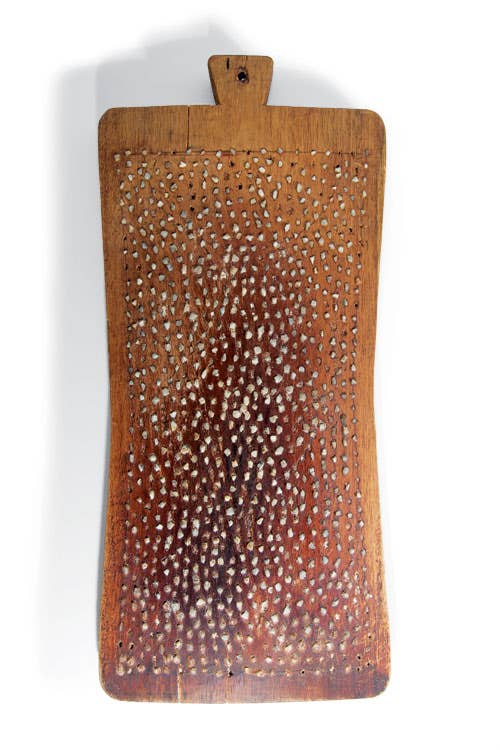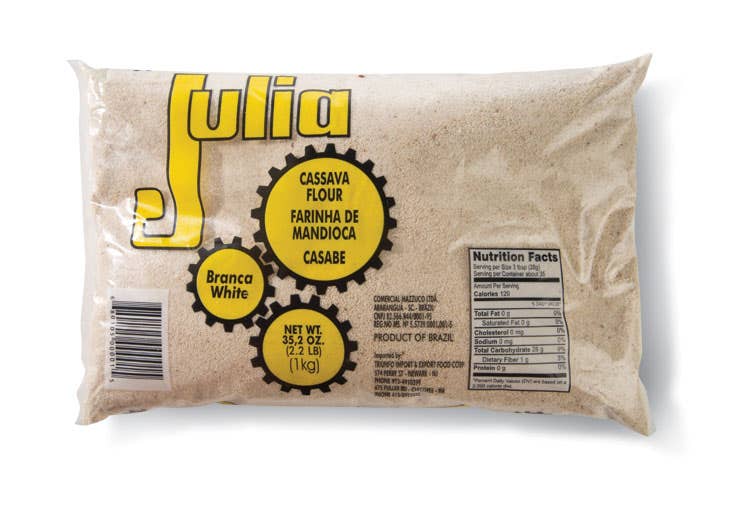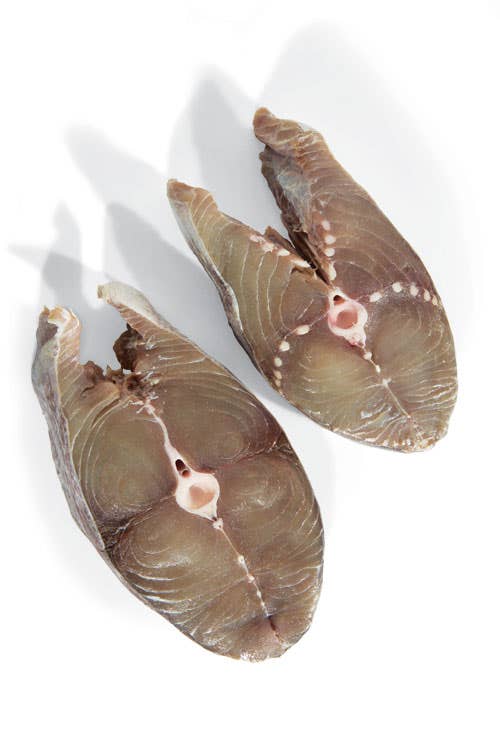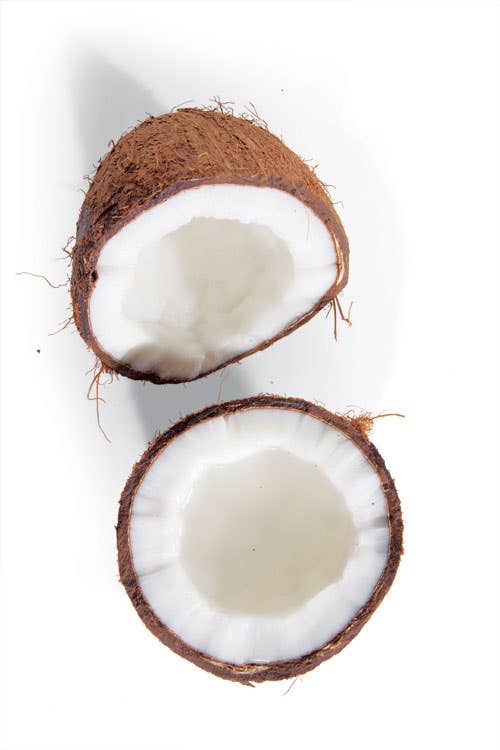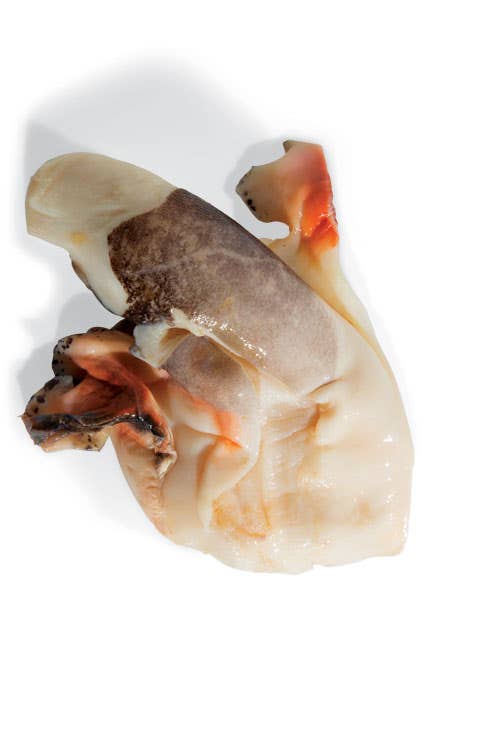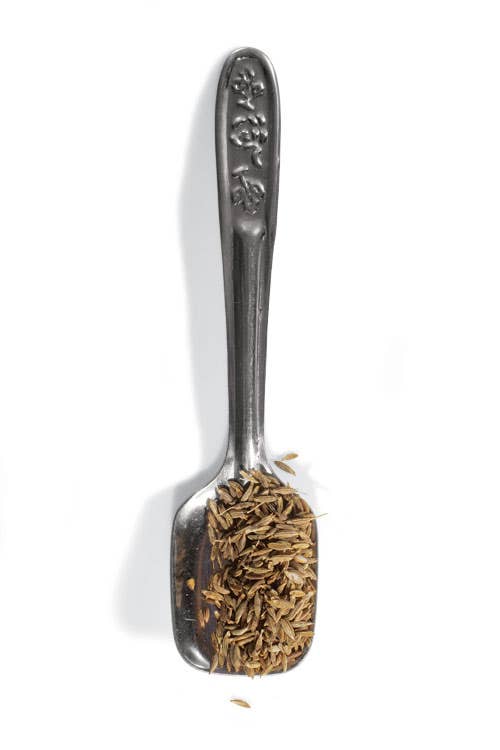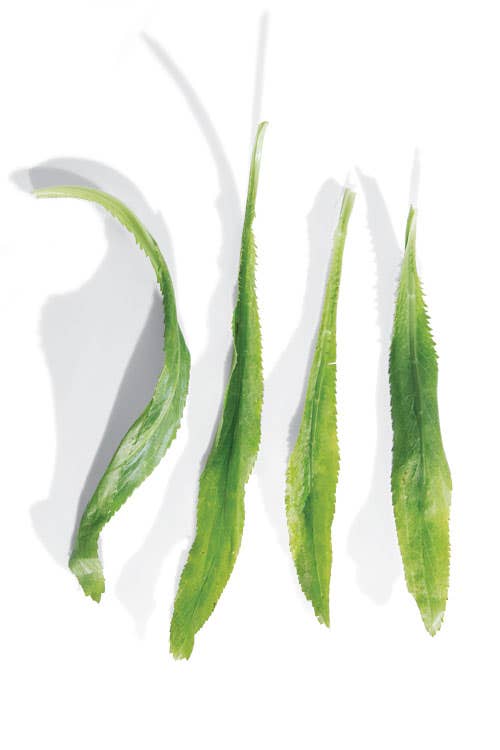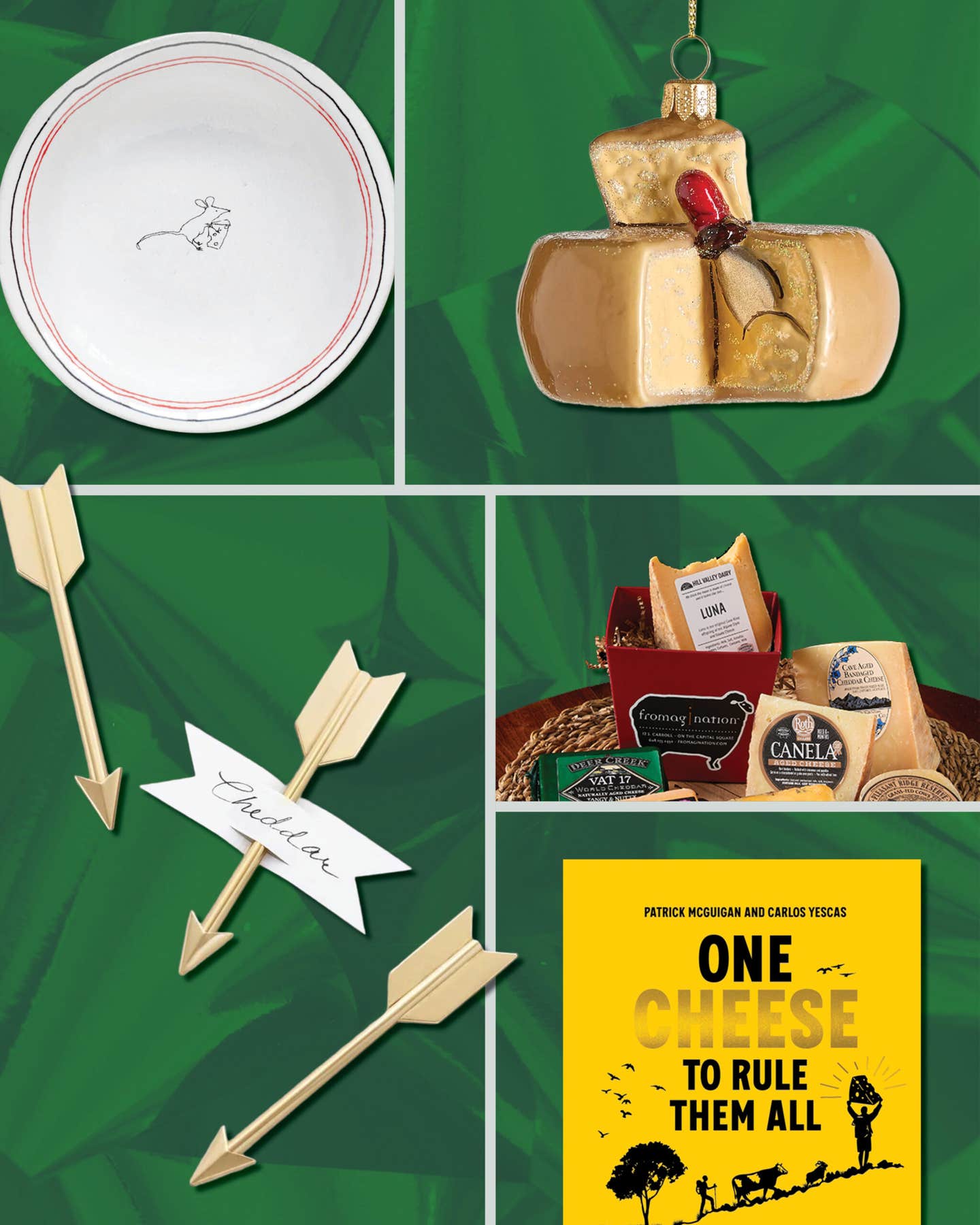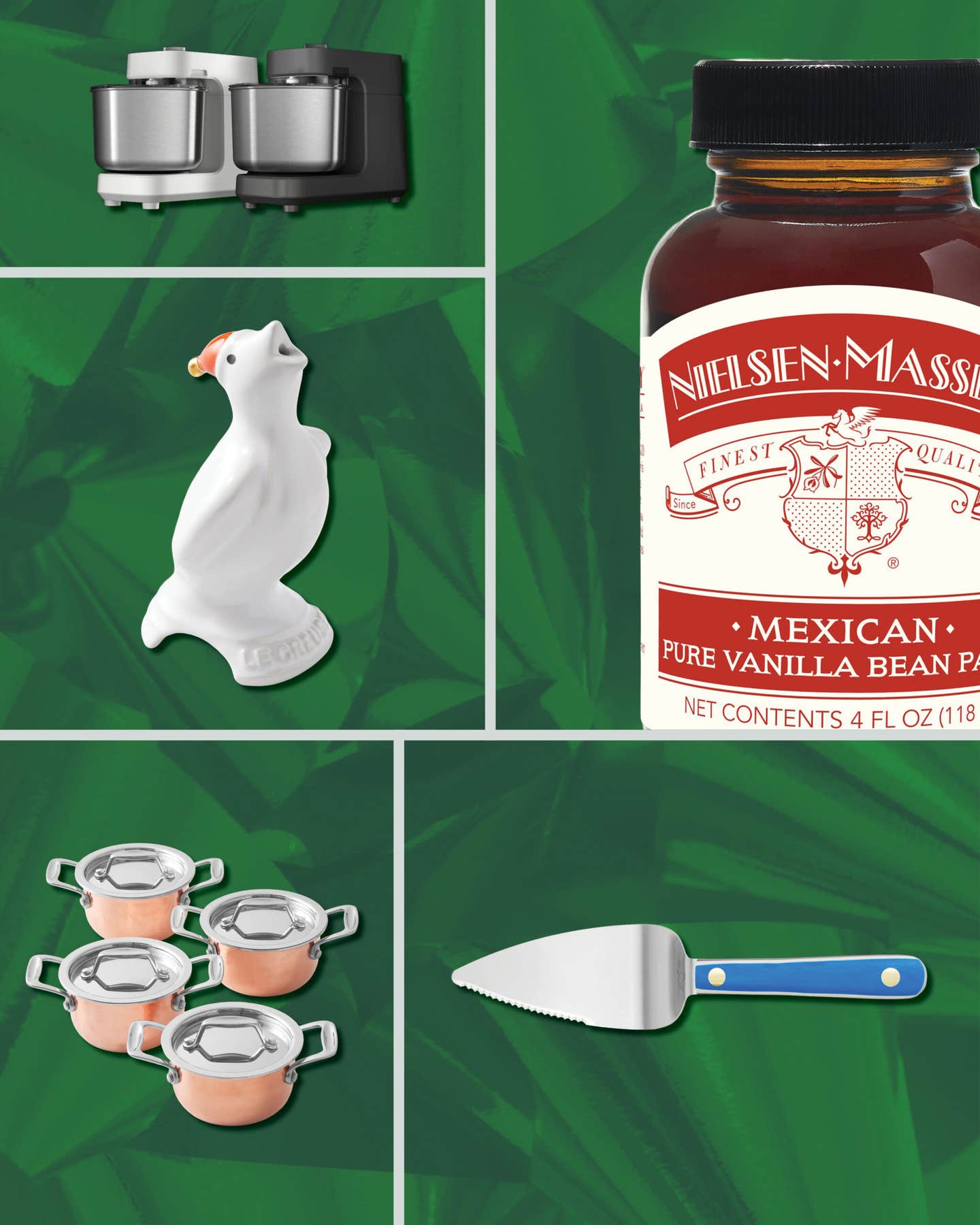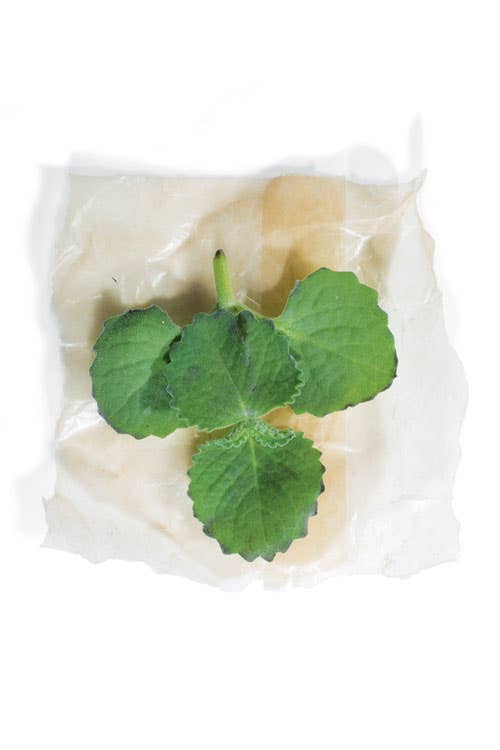
Garifuna Cooking Essentials
Hana
Hand-carved out of wood (originally mahogany, but now oftentimes pine), this large mortar with its 4-foot-long pestle is used to beat boiled plantains for the fufu-like mash that is eaten with fish-and-coconut stew in the dish called hudutu, an iconic meal whose name means “it has been pounded.” Similar tools are used in West Africa, where ancestors of the Garifuna originated. See the recipe for Hudutu (Fish and Coconut Stew with Mashed Plantains) »
Egi
Fashioned from a hand-hewn wooden board studded with sharp pieces of quartzite stone, this tool is traditionally used to grate cassava to make flour for bread, as well as coconuts to make coconut milk, and bananas for the dumplings called alabundigas. The sturdy tool is often passed down from mother to daughter over several generations.
Cassava Flour
The Garifuna peel, wash, and grate the native Caribbean root vegetable cassava. Then they press it in a woven strainer to extract its toxic juice, and finally dry it to make a starchy flour that, when cooked over a wood fire, binds into a wafer-like flatbread. In packaged form or hand-milled, cassava flour can be used as a gluten-free substitute for wheat flour.
Kingfish
King mackerel, commonly known as kingfish, migrate through the Caribbean Sea in spring en route to the Gulf of Mexico. The off-white, firm, oil-rich fish is a ubiquitous ingredient throughout the region, including in the cooking of the Garifuna. It is often cut into steaks, which are marinated in citrus, rubbed in garlic and herbs, and fried before simmering in coconut milk stew.
Coconut
Perhaps the most essential Garifuna ingredient, coconut is grated, mixed with water, and squeezed to create coconut milk, which is used in stews, soups, and breads. Coconut oil, used for frying, is obtained by simmering the milk to release its fats, which are then skimmed off. The grated meat is also cooked with sugar and spices for sweets.
Conch
A staple of the Caribbean diet, this large sea snail has been harvested as food for centuries in the islands. It is battered and fried, chopped and used in fritters, marinated for salads, and simmered in soups, including the Garifunas’ coconut milk-based irau juyeirugu. Though its dense, white meat is delicious, it must be tenderized before eating. See the recipe for Irau Lau Juyeirugu (Seafood Soup) »
Cumin
This Mediterranean spice was brought by the Spanish to Latin America, where it lends its pungent flavor to stews, soups, and other dishes. Garifuna cooks often use it in a ground spice mix called pimienta y comino (black pepper and cumin).
Culantro
A relative of cilantro that’s native to the Caribbean and tropical Americas, this herb has long, soft, spiky leaves and a flavor similar to, but stronger than, its cousin’s. It is used fresh in dishes all over these regions, including Garifuna hudutu and other fish and coconut dishes. It can be found in Latin American grocery stores throughout the United States.
Keep Reading
Continue to Next Story
